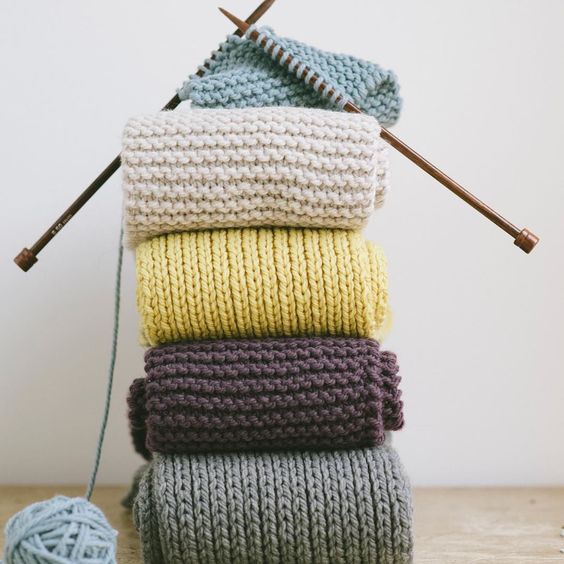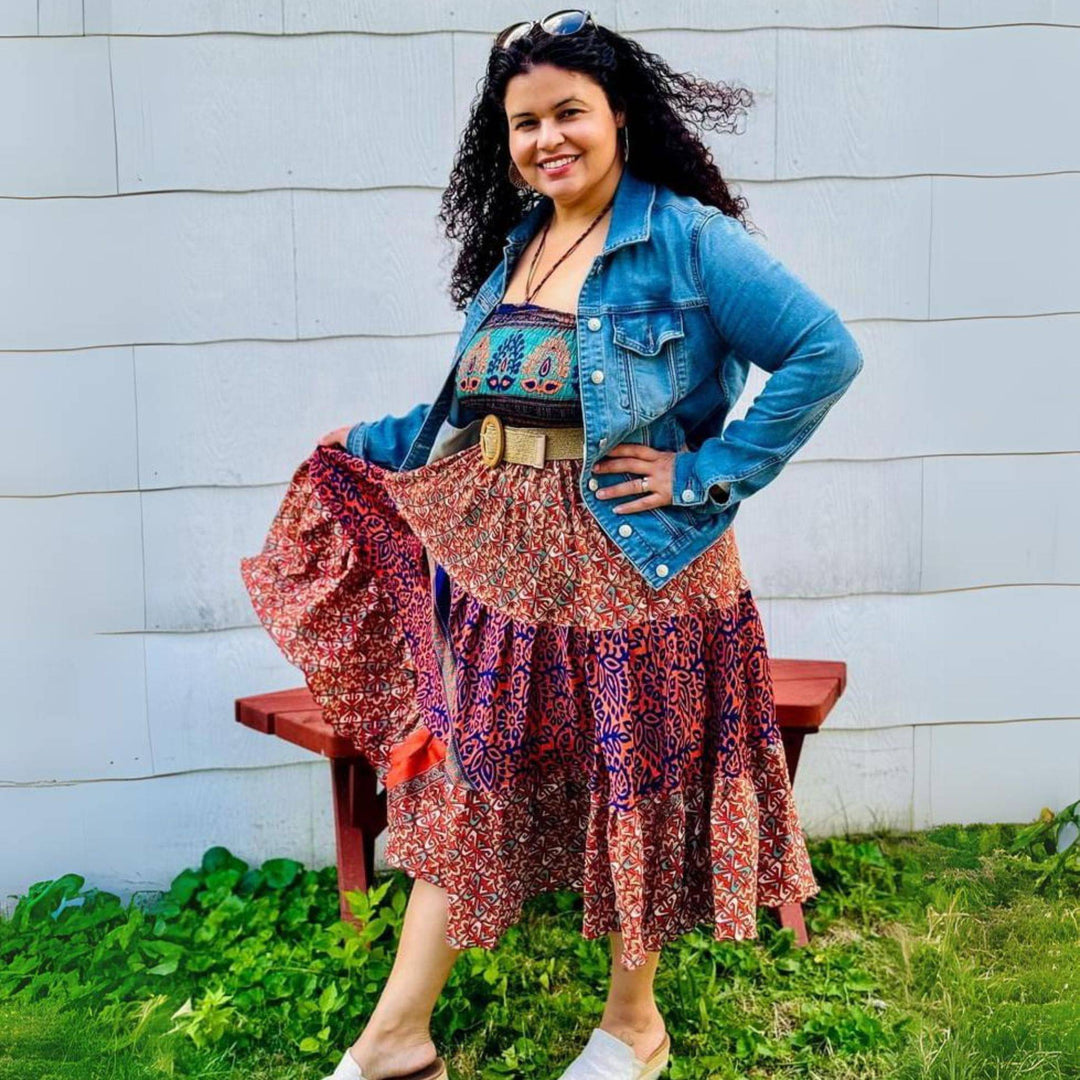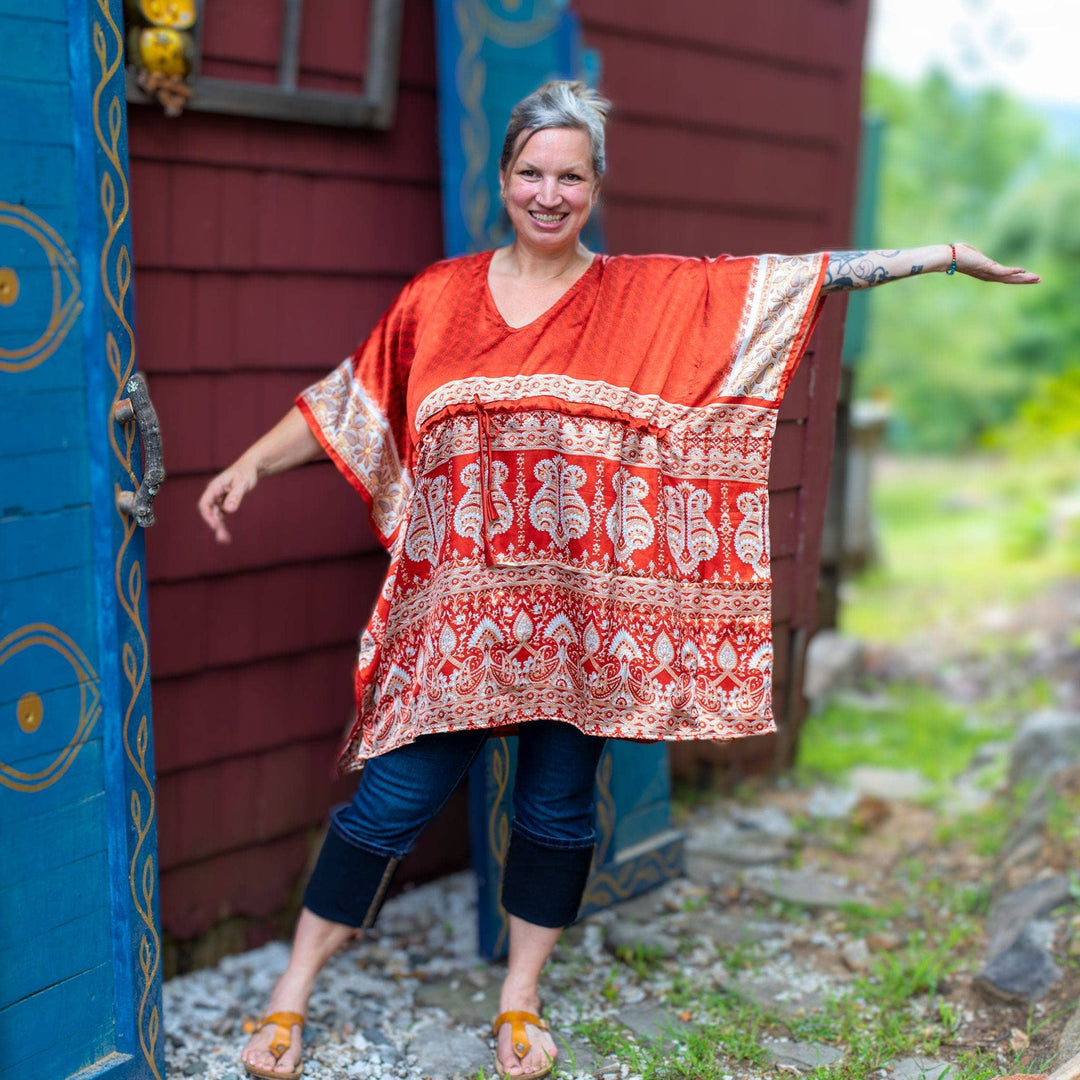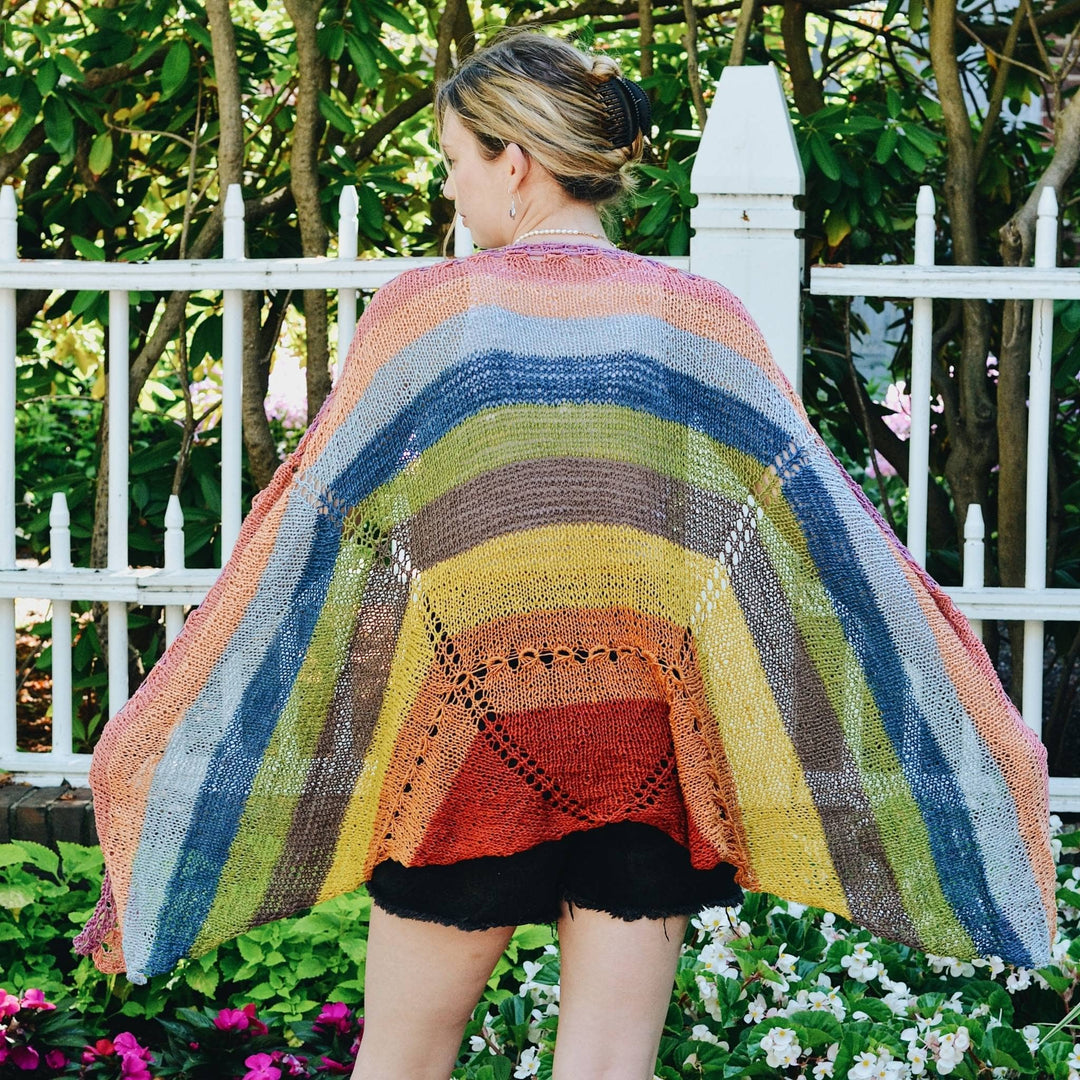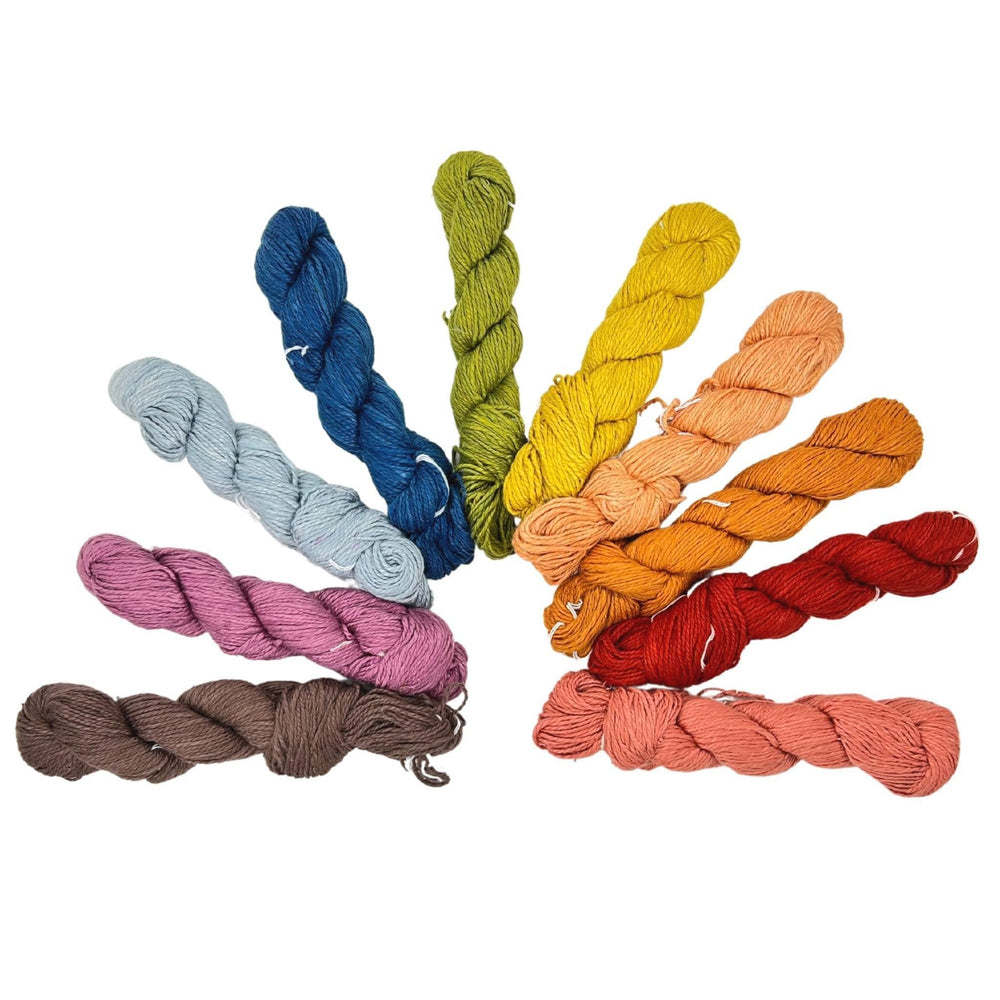It is common for beginners to face numerous challenges while learning how to knit, and the language happens to be one of the most common ones. So if you're looking for brief, easy-to-understand explanations of all knitting terminologies, you are in the right place.
But First, What is Knitting?

By definition, the term knitting refers to a technique of intermeshing yarn loops to form a fabric. It involves the knitter drawing one loop through another in horizontal or vertical directions. This means that knitted clothing is different from woven clothing as this fabric consists of parallel courses of yarn.
Types of Knitting
There are two major types of knitting that a beginner must know about: weft knitting and warp knitting.
Weft Knitting
Weft knitting refers to the knitting technique that involves looping a single yarn horizontally. In weft knitting, you intermesh loops either flat or circular.
Warp Knitting
Warp knitting refers to the knitting technique in which the loops are made vertically along the length of the fabric. This type of knitting also uses a single yarn, while loop intermeshing can only occur in a flat form.
Knitting Terms- A to Z

Here are some terms you must know about to master knitting vocabulary.
Alternate: The term alternate refers to an action in knitting that you need to perform after every other row.
Aran: Aran is the weight classification of yarn. It is slightly heavier than regular worsted weight yarn.
Armenian Knitting: Armenian knitting helps in tacking floats in standard forms of knitting. This helps prevent any floats on the wrong side of your knit fabric.
Arm Knitting: Arm knitting is a knitting technique that replaces knitting needles with the arms of the knitter. This is especially useful for larger projects such as blankets.
Back of Loop: You might often need to work a stitch through the back of a loop. This means purling the yarn thread through the portion of the stitch behind the needle in relation to your position. This twists the stitch and is often done intentionally to form a certain knitting pattern.
Backstitch: Backstitch strengthens the seam of a knit fabric by doubling back the seam on itself.
Bias: Bias involves skewing columns of stitches diagonally. You do this by increasing on one side of the fabric and decreasing on the other.
Bind Off: Binding off is also sometimes called casting off. This simply refers to ending a row of stitches. There are different ways to bind off.
Bobble: Bobble is a decorative knit stitch, most often a part of lace knitting.
Cable Needle: Cable needles are a type of needle that can hold live stitches off the needles as you perform cable knitting. This way, you can stitch in a different order and create the cables.
Circular Knitting Needles: Circular knitting needles feature two separate needles attached to a cord. These help knitters in knitting large pieces in a circular direction.
Combination Knitting: Combination knitting combines eastern and western knitting methods.
Condo Knitting: Condo knitting is a method that allows you to knit a piece using two differently-sized needles. This technique helps create large gaps in your cloth, similar to drop stitches.
Decrease: Decrease refers to lowering the number of stitches in a certain row. Often, knitters decrease a certain number of stitches by every row. But there are several ways of decreasing knitting.
Double Knit (DK): DK is one of the most popular weight yarn options for knitters. This works best for knitting items like scarves, socks, sweaters, etc.
Double Knitting: Double knitting helps make two distinct sides for a single item to make it reversible.
Dropped Stitches: These are stitches that have fallen off the needle during knitting. While it is usually a mistake, it is not hard to fix dropped stitches.
Double-Pointed Needle (DPN): Double-pointed needles have needling points on both ends. These help in knitting smaller round items.
Eastern Knitting: This method allows knitters to work all the stitches through the back of loops. It involves putting the leading thread at the back of the work for knitting and purling stitches.
English Knitting: In English knitting, the knitter must hold the yarn in their dominant hand. However, it is most common in North America and the British Isles. Knitters all over the world practice this technique.
Fair Isle: Fair Isle used two separate yarn strands for each row or round. Most often, it only involves strands of 5 stitches or less.
Finger Knitting: In the finger knitting technique, knitters use their fingers to stitch in place of knitting needles.
Frog: Frogging is a knitting technique that refers to undoing new stitches and continuing them from a previous row.
Garter Stitch: Garter stitch results from knitting both the right and wrong side rows. It is one of the first stitches for beginner knitters.
Gauge (Tension): Gauge and Tension are interchangeable terms in knitting that refer to the number of stitches in every inch. Different factors like the yarn type, needle size and type, and pattern can affect the gauge.
Heel Stitch: People also refer to heel stitch as the Eye of the Partridge. This stitch helps form a durable fabric that can tolerate usual wear and tear. This involves alternating slip stitches to add more density to the fabric.
Helix knitting: It is common for jogs to appear when you're knitting in a round direction. The Helix knitting technique can help prevent this issue by creating an upward spiral effect in the knitting pattern.
Illusion Knitting: Illusion knitting is a technique that helps create beautiful illusion patterns on knitting projects. It involves using colored yarns to create stripes and placing them strategically to create a pattern.
Increase: Increases refer to special stitches and modifications through which you can increase the number of stitches in a row. Increases can be either single or double and lean towards aside.
Intarsia: Intarsia is a knitting method involving color-work to create color blocks without hanging strands. It is impossible to knit intarsia around.
Jog: Jog refers to the distortion that is visible in colored knitting.
Join: Joining means combining two separate ends of a round-knit pattern. While there are various types of joins in knitting, invisible join is the most common. In an invisible join, knitters add an extra stitch to the cast-on row, followed by passing it over the first stitch of the pattern.
KIP or Kipping: These terms refer to the action of knitting in a public area.
Kitchener Stitch: Kitchener stitch is a seaming method in knitting that joins two pieces of knit fabric together. Frequently, knitters use this method along with the stockinette stitch.
Knooking: Knooking is a knitting style that allows you to attach a cord using an eyelet and crochet hook. The cord acts like the second needle that holds the live stitches in place as you knook the next row using the crochet hook.
Ladder: Ladder refers to gaps appearing between vertical columns of stitches. Ladders are most common in the round as a result of uneven tensions.
Lagging Leg: The lagging leg is the yarn strand present on the opposite side of the needle from the leading leg.
Leading Leg: This is the piece of yarn that attaches directly to the skein and working yarn. The leading leg slightly moves when you tug on the working yarn.
Lever Knitting: Lever Knitting or Flicking is a knitting style that requires the knitter to hold the working yarn in their dominant hand. Then, they must loop the yarn around the working needle without leaving the needle from their dominant hand. This creates a sort of back and forth motion.
Lifeline: Lifeline is the yarn piece or strand that knitters insert into the previous row. This helps hold the stitches in place for when you need to frog your work in case of a mistake.
Live Stitch: Live stitches are the unworked stitches on the needle.
Magic Loop: Magic loop is a creative technique for knitters who do not enjoy using double-pointed needles. It involves using circular needles to knit tiny tubes for items like gloves and socks, etc.
Modular Knitting: Many knitters also call it the number of domino knitting. It is a clever knitting technique that uses various knitted module styles to create a new project. The mitered square is typically the most common style of modular knitting.
Mosaic Knitting: Mosaic knitting is a color-work knitting style that involves slipping stitches from previous rows. This is why mosaic knotting is also sometimes called slip-stitch knitting or slip-stitch color-work.
Negative Ease: Negative ease is a term used for knitting fitted garments like sweaters. Knitters might use the term for additional stitches for making the clothing tighter or the particular gauge used.
Niddy Noddy: Niddy Noddy is a knitting tool that allows easy skeining of skeins. It is shaped like the English alphabet H.
Openwork: Openwork is a lace knitting term that refers to knitted panels that have decorative holes. These are often a result of yarnovers.
Pass Slipped Stitch Over Pass slipped stitch over is a knitting method used in binding off for decreasing stitches.
Plan: Plan is a type of yarn made with upcycled plastic.
Pom-Pom: Pom-Poms are decorative knitting items, often used for adorning items like hats, etc. These are small balls of yarn.
Portuguese Knitting: Portuguese knitting is a knitting style in which the knitter holds the tension of the yarn around the neck instead of in the hands. This helps knitters to knit faster, especially in larger projects.
Positive Ease: Used for knitting tighter garments, positive ease refers to a particular gauge or additional stitches that can loosen it.
Repeat: Repeat is the part of the knitting pattern that repeats itself multiple times in a single row. In written patterns, the symbols for a repeat are: ( ), [ ] and *
Ribbing: Ribbing refers to purling and knitting in stockinette formation and stockinette reverse. In ribbing, yarns curl between knit and purl stitches, giving it a tighter gauge than the rest of the project. Ribbing gives a stretchy edge to garments.
Round: Round is the term used instead of 'row' in circular knitting patterns.
Rowing Out: The term describes uneven tension between stockinette rows. Simple tricks like blocking or changing needle size can help prevent rowing out.
Seed Stitch: It is one of the most common textured stitches. Most beginners begin to learn textured knitting, starting with this stitch type. You can obtain a seed stitch by alternating the K1, p1 row with the p1 K1 row.
Short Rows: Knitters create short rows by knitting back a certain number of stitches and then returning to the usual stitching method. This is typically done before ending a row to increase the number of stitches vertically instead of horizontally.
Slip Knot: Slip knots form the first stitch of cast on a row and are the basis of all knitting patterns.
Slip Stitch: A slip stitch refers to the stitch that slips and falls off of the dominant needle onto the working needle.
Stitch: A stitch can mean two things in knitting, individual stitches and stitch patterns. Needles make individual stitches, whereas various combinations of individual stitches form a stitch pattern.
Wale: Wale refers to a single column of stitches.
Wrong Side: The term wrong side refers to the backside of your knitted fabric. This is opposite the ride side and is meant to be less visible when the project is being used.
Yarn Over: By yarning over, knitters create a small eyelet in the knitted fabric. This is a method of increasing stitches and is often used in lace knitting.
Zero Ease: Like positive and negative ease, zero ease also refers to the intended or unintended fitting of particular knit clothing. Zero ease means that the garment correctly matches the measurements.
Get The Tools Needed To Knit!
Bottom Line
Learning knitting vocabulary is important to understand the meaning of knitting terms that often come when learning how to knit. You understand the terms, but it also helps knitters in following the instructions correctly and mastering the skill.
Sources
https://www.interweave.com/interweave-knitting-glossary/
https://www.allfreeknitting.com/Tips-for-Knitting/Knitting-Terms-Explained
https://www.craftyarncouncil.com/standards/knitting-abbreviations
 Rewards
Rewards

